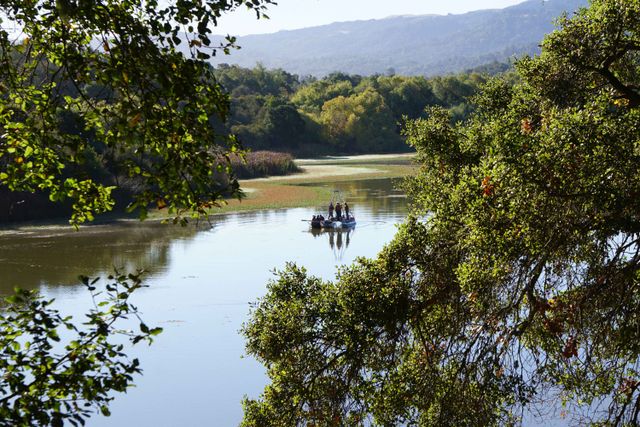What if the Dam was removed?
With Anthony D. Barnosky, Lesley Green, Orit Halpern, Elizabeth A. Hadly, Brian Holmes, Michelle Murphy, Allison Stegner, Karolina Sobecka, Olúfẹ́mi O. Táíwò, Stephanie Wakefield, Mi You
In German and English
We recommend that guests wear FFP2 masks. More information

The confrontation with and mitigation of the ruptures that the Anthropocene has set in motion are taking place in both complex and very particular socio-ecological landscapes. What could a single major infrastructural decision tell us about the situational contexts of bringing about lasting change?
In the hills above San Francisco lies the Searsville Reservoir. Long out of use, it is by now almost entirely filled with sediments. While these sedimentary layers provide excellent data sets for geologists of the Anthropocene, the dam holding the reservoir causes a variety of ecological problems. So, what if the dam was removed?
Scientists, researchers and artists take this speculative case study as a starting point to extrapolate on the manifold ramifications that such an intervention would entail. In presentations and discussion, they will address the questions of agency and governance that underlie any meaningful answer to the social and ecological challenges of the Anthropocene.
This session explores the situational contexts, histories of power and social norms that define the ways and means available for making change in a transforming world. What If the Dam Was Removed? explores how these governance models, contestations and negotiations can help us understand and address the storied power dynamics that situate agency not just at this site but anywhere.
With Anthony D. Barnosky, Lesley Green, Orit Halpern, Elizabeth A. Hadly, Brian Holmes, Michelle Murphy, Allison Stegner, Karolina Sobecka, Olúfẹ́mi O. Táíwò, Stephanie Wakefield, Mi You